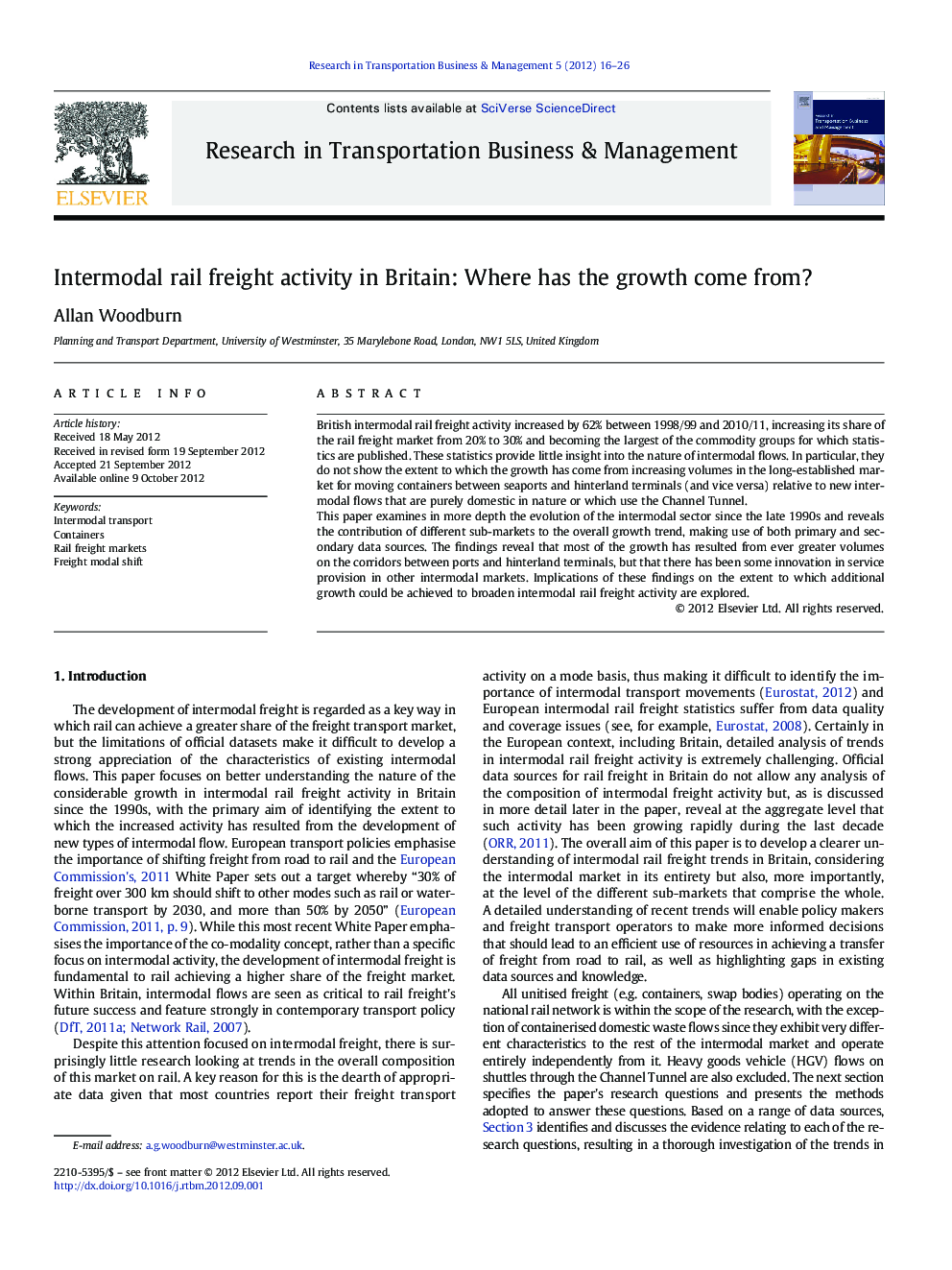| Article ID | Journal | Published Year | Pages | File Type |
|---|---|---|---|---|
| 999822 | Research in Transportation Business & Management | 2012 | 11 Pages |
British intermodal rail freight activity increased by 62% between 1998/99 and 2010/11, increasing its share of the rail freight market from 20% to 30% and becoming the largest of the commodity groups for which statistics are published. These statistics provide little insight into the nature of intermodal flows. In particular, they do not show the extent to which the growth has come from increasing volumes in the long-established market for moving containers between seaports and hinterland terminals (and vice versa) relative to new intermodal flows that are purely domestic in nature or which use the Channel Tunnel.This paper examines in more depth the evolution of the intermodal sector since the late 1990s and reveals the contribution of different sub-markets to the overall growth trend, making use of both primary and secondary data sources. The findings reveal that most of the growth has resulted from ever greater volumes on the corridors between ports and hinterland terminals, but that there has been some innovation in service provision in other intermodal markets. Implications of these findings on the extent to which additional growth could be achieved to broaden intermodal rail freight activity are explored.
